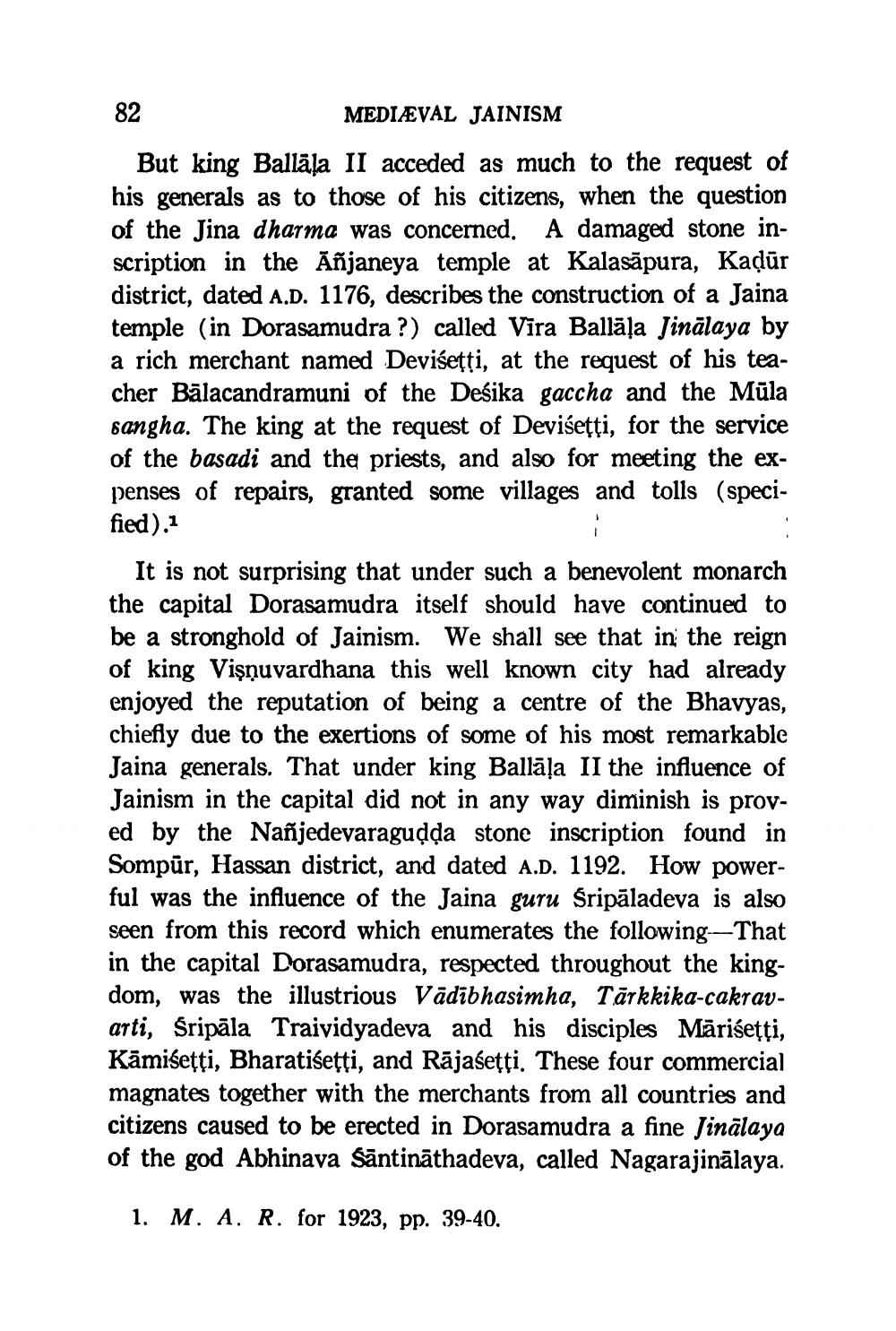________________
MEDIÆVAL JAINISM But king Ballāļa II acceded as much to the request of his generals as to those of his citizens, when the question of the Jina dharma was concerned. A damaged stone inscription in the Añjaneya temple at Kalasāpura, Kadūr district, dated A.D. 1176, describes the construction of a Jaina temple (in Dorasamudra ?) called Vīra Ballāļa Jinälaya by a rich merchant named Deviseçti, at the request of his teacher Bālacandramuni of the Deśika gaccha and the Mūla sangha. The king at the request of Devisetti, for the service of the basadi and the priests, and also for meeting the expenses of repairs, granted some villages and tolls (specified).1
It is not surprising that under such a benevolent monarch the capital Dorasamudra itself should have continued to be a stronghold of Jainism. We shall see that in the reign of king Vişnuvardhana this well known city had already enjoyed the reputation of being a centre of the Bhavyas, chiefly due to the exertions of some of his most remarkable Jaina generals. That under king Ballāļa II the influence of Jainism in the capital did not in any way diminish is proved by the Nañjedeyaraguļda stone inscription found in Sompür, Hassan district, and dated A.D. 1192. How powerful was the influence of the Jaina guru Sripāladeva is also seen from this record which enumerates the following—That in the capital Dorasamudra, respected throughout the kingdom, was the illustrious Vādībhasimha, Tārkkika-cakravarti, Sripāla Traividyadeva and his disciples Mārisețți, Kāmisețți, Bharatiśețți, and Rājasetti. These four commercial magnates together with the merchants from all countries and citizens caused to be erected in Dorasamudra a fine Jinālaya of the god Abhinava Sāntināthadeva, called Nagarajinālaya.
1. M. A. R. for 1923, pp. 39-40.




